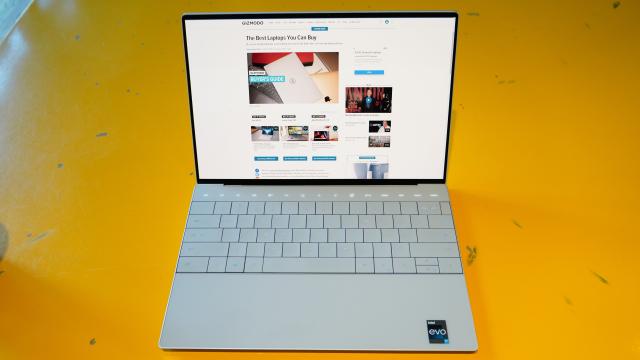For years, Dell’s XPS line has presented some of the most compelling thin-and-light laptops on the market. While these machines always came at the higher end of the price spectrum for their category, they offered exceptional design and build quality. The new Dell XPS 13 Plus takes design to another level with a largely reimagined aesthetic that makes it one of the more eye-catching laptops out there, if not the most practical. While the Dell XPS 13 Plus goes for performance and style in equal measure, its radical new looks may have a hard time winning over new users.

Dell XPS 13 Plus
What is it?
An upgraded version of Dell's XPS 13 laptop
Price
Starts at $AU2,899.01, Reviewed at $AU3,099.01
Like
Exquisite display, Robust performance for a thin-and-light, Sturdy construction
Dislike
Runs warm, Design lacks meaningful benefits, Just par battery life
“Plus” means high-end configurations only
The Dell XPS 13 Plus comes at a premium over the standard Dell XPS 13. That premium accounts for the redesign, where the standard XPS 13 sticks closer to previous designs, and it factors in the higher performance coming from Intel Alder Lake P-series CPUs instead of the U-series chips that are in the standard models.
The unit Dell sent over for our review falls somewhere in the middle of the pack price-wise, landing at $AU3,099.01 for an Intel Core i7-1280P (the highest-end processor offered for this model), 16GB of LPDDR5 RAM running at 5,200Mz, 512GB of PCIe 4.0 storage, and a 3,456 x 2,160 OLED touch display with a peak brightness of 400 nits.

Dell offers substantial customisation options for this model, though. The base configuration running an Intel Core i5-1240P, 16GB of RAM, a 512GB PCIe 4.0 SSD, and a 1,920 x 1,200 non-touch display brings the price down to $AU2,899.01. Maxing the configuration out with the same processor we’re testing, 2TB of storage, the same display (or a non-oled model with a 500-nit peak brightness and 3840 x 2400 resolution), 32GB of RAM and Windows 11 Pro (as opposed to Windows 11 Home) tops the system out at $AU4,899. Dell also offers configurations with an Intel Core i7-1260p.
Dell’s standard XPS 13 models feature the more traditional design and drop the price down as low as $AU1,898.99, but both configurations feature lower-powered U-series processors with fewer cores and threads, and there’s no option for a 4K OLED display. This may not be a dealbreaker for those who don’t have as demanding processing needs, though.
A radical redesign without radical new features
When the Dell XPS 13 Plus is shut, there is almost nothing about it that grabs the eye. It’s a very simple slab of pale aluminium (or dark aluminium for the Graphite coloured model). “Dell” is printed on the lid and “XPS” is printed on the underside. Even the sides of the laptop aren’t eye-catching, with just a single USB-C (Thunderbolt 4) port on each. That’s it for ports, too — no USB-A to play nice with older peripherals and not even a 3.5mm headphone jack to make do when Windows persists in making Bluetooth devices as unreliable as ever. A shame to see so few ports when the laptop’s 0.6-inch thickness and 1 kg weight aren’t breaking any records for ultrabooks and are actually up from the weight and thickness of the standard XPS 13 model.
It’s when you open the laptop up that the design language changes dramatically, though the lack of a lip on the display portion of the laptop makes opening it a bit more tedious.
Inside, Dell has highlighted style at the expense of practicality. The keyboard stretches across the width of the laptop with no gaps at either end. The rectangular keycaps also leave almost no space between one another. It’s visually stunning, until you look closer and can’t unsee the imperfect spacing between keys and uneven heights at the edges of them — those who appreciate meticulous design will struggle here.
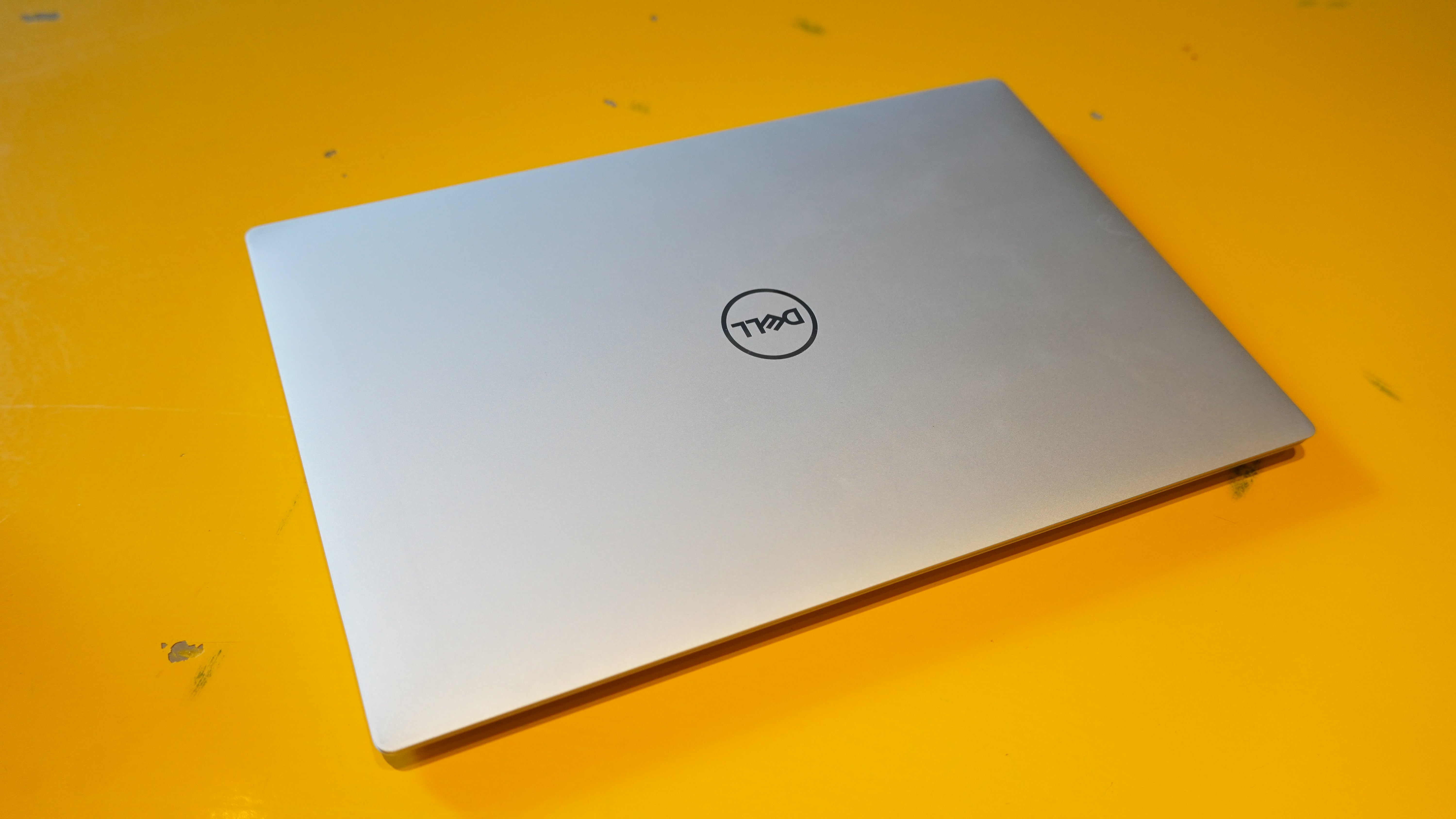
Below the keyboard, there’s no visual space given to the trackpad, but it’s there, seamlessly blended into the glass surface below the keys. Above the keyboard, Dell has opted for capacitive touch buttons in place of the traditional function row. This provides a neat effect, as holding the function button on the keyboard sees this row switch from displaying various functions to displaying F1-F12. The downside to this is that the row is persistently backlit. The keyboard itself also provides two levels of white backlighting, which is helpful in the dark and counterproductive in the day, given the white keys.
The laptop includes two biometric security features, with a fingerprint reader built into the unlabeled power button at the top-right corner of the keyboard and an IR camera system for Windows Hello above the display.
The display itself has remarkably thin bezels, which are just 0.1 inches at the sides and just a little thicker (about 0.18 inches) at the top and bottom. Dell vents heat through the back of the laptop, sending it out just below the hinge of the display. Audio pipes out through two sets of slots on either side of the bottom of the chassis, which may also serve as air intakes.
In a way, the laptop calls to mind the scene in American Psycho where all the businessmen are comparing business cards, one-upping one another with ever more elaborate designs and details, though the cards all ultimately convey the same information. This design certainly does more to be eye-catching than the original Dell XPS 13 design, but it doesn’t meaningfully upgrade what the laptop offers. And honestly, striking as the design is, there’s no way it stays pleasing for long. The exterior aluminium is blemish prone, and the interior material feels like the sort to discolor easily, though the latter already started out looking like PC cases from the late 1990s.
The keyboard isn’t as bad as it looks and the trackpad isn’t as good as it looks
At first, I was concerned by the keyboard and trackpad design. They don’t seem user-friendly. The keys don’t present as much margin for error as your standard design, and the trackpad’s ill-defined boundaries leave me guessing where I’ll actually have my inputs registered.
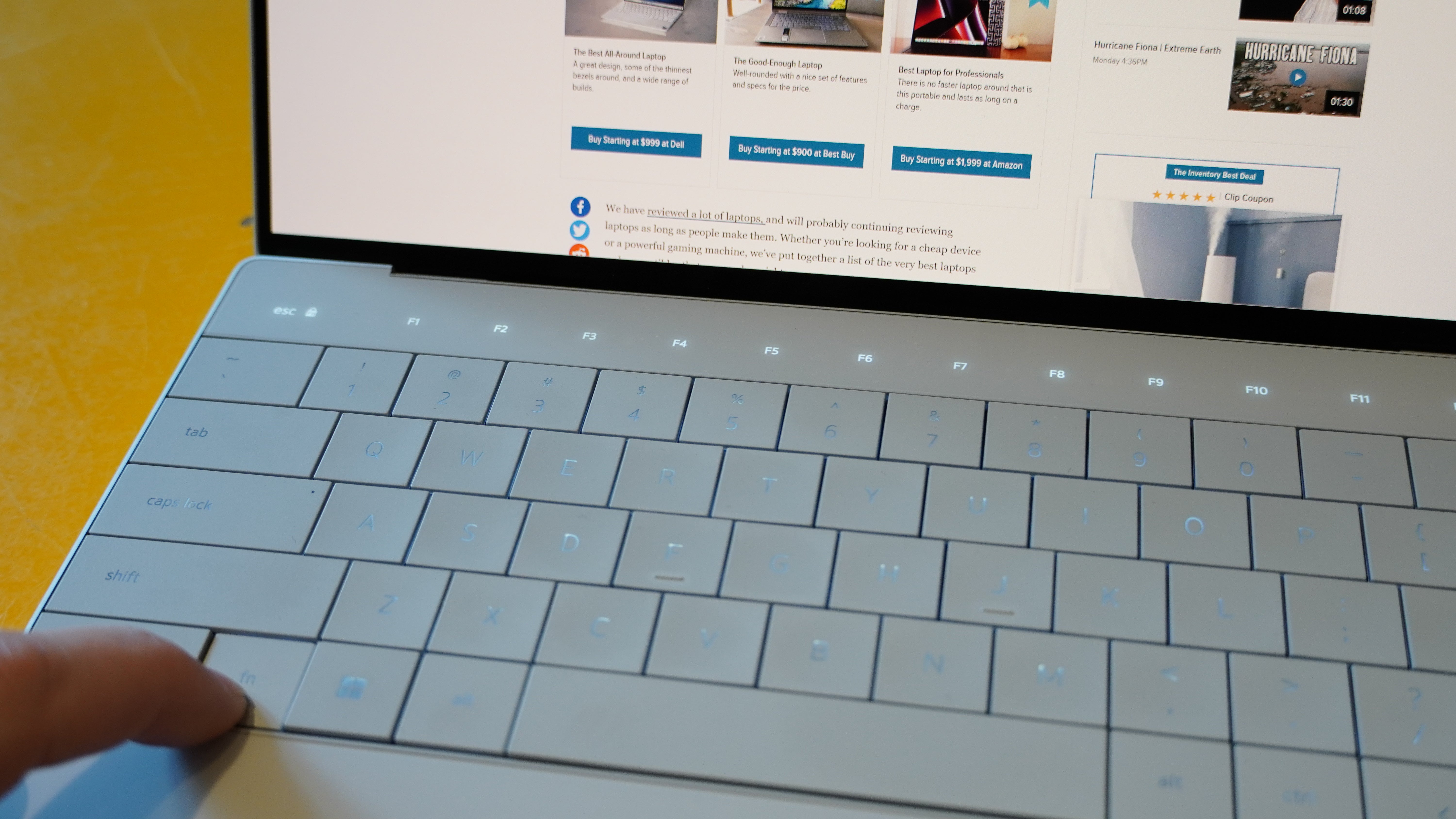
As baffling as the trackpad is, it seems to have solid palm rejection. Because it’s so wide and has no tangible borders, it’s all but impossible to keep my palms from resting on it somewhere while typing. But my cursor sits perfectly still all the while. It rarely mistakes my intentions between a normal click and a right click, the latter of which is only registered when I click somewhere near the bottom right side of the trackpad. Though it seems like it could be massive, the trackpad isn’t actually all that large. The biggest problem is that I often run off the side of it or try to use it too close to the edge and get no on-screen feedback,
The configuration I’m testing does include a touchscreen, which provides one way around having to use the trackpad for everything. It’s fairly responsive and smooth to the touch.
The keyboard is a novelty that proves surprisingly usable. I say surprisingly because the elimination of virtually all space between the keys makes it look like it would be a nightmare to use. Resting my fingertips on the keyboard, I do feel an odd sense of uncertainty in their placement. But, once I’m typing away, I’m just about as fast and consistent as I am typing on my daily-driver Asus Zenbook laptop. I consistently hit just over 100 words-per-minute typing with a 93-98% accuracy. I can reach over 110 WPM on my usual laptop, but the variance is enough to chalk up to the Dell XPS 13 Plus just being a new and unfamiliar keyboard I need more time to fully adjust to.
That typing experience comes once I’m in typing position with my fingers properly floating over the home row. Once there, it’s easy to keep going. But it takes a second to reset every time I move away from the home row, such as to add some extra punctuation or pound in some numbers. This does slow down the overall use of the laptop.
Stunningly crisp, if not fast, display

Dell packed in an obscenely sharp display here, boasting a resolution of 3,456 x 2,160. This makes for a pixel density of just a hair over 300 ppi, as sharp as anyone should need.
As an OLED panel, the display has pitch-dark blacks, though Dell’s anti-glare finish doesn’t appear as effective as some others, which leaves those black areas of the display appearing slightly illuminated by external lights reflecting off of it. This would be less of an issue in a dark room. However, with content playing on the display, the minor reflections in the black areas are less of a distraction and the display’s substantial contrast and poppy peak brightness play out better, especially when viewing HDR content, which lets highlights burst out. By default, I measured the display peaking at a satisfactory 385 nits, but HDR let that peak brightness hit up to 621 nits in highlights. That HDR experience includes support for Dolby Vision, making for some truly striking visuals.
Even with big, mostly white windows open, I never noticed any ABL (auto brightness limiting) action kicking in to try to preserve the life of the OLED panel. It’s unclear if Dell doesn’t think the laptop needs this type of protection.
It’s somewhat disappointing to only see a 60 Hz refresh rate available on this laptop. Many high-end and even mid-range notebooks are bringing a touch of extra smoothness to the experience with boosted refresh rates. Take the Microsoft Surface Pro 8 or Asus Zenbook 14 OLED, both of which can bump up to 90 Hz. Granted, the configurations that can do so aren’t 4K, but even the 1080p versions of the XPS 13 Plus top out at 60 Hz.
Pump up the audio, but not the jams
The XPS 13 Plus packs impressive speakers for its size. They can pump out a heavy dose of audio, though once they’re cranking out louder sounds, they begin to trip themselves up. Loud, busy music quickly becomes muddled and unpleasant to listen to at high volumes. There’s a marked absence of bass. On this laptop, Yellow Ostrich’s tune Whale starts off with thumping drums that only have a little life to them even with the speakers maxed out. Once the vocals start layering on top, the upper registers quickly become grating. As the song unravels into chaos toward the end, it’s simply hard to listen to. Dipping to around 50% volume helps cut down on the grating quality, but drains a lot of the energy as well.
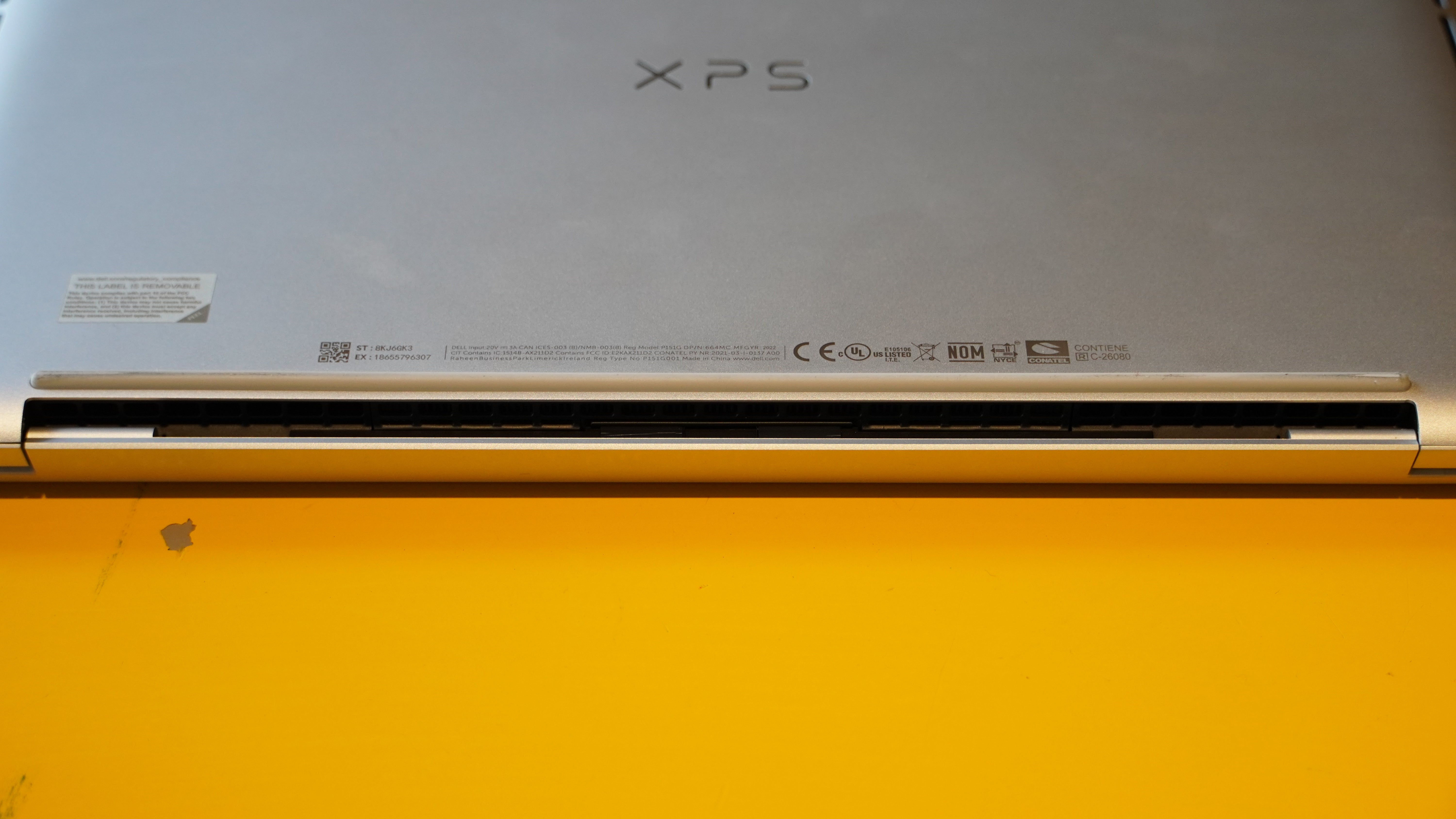
The speakers here do the job for basic entertainment and can deliver a podcast or speech-heavy video compellingly, but separate speakers or headphones are a good idea for deeper entertainment. Dell’s MaxxAudio Pro app provides some sound tuning options but really can’t create bass. Interestingly, it also offers Waves Nx 3D audio with wireless headphones by using the webcam to determine the head position and alter the audio in response, but this seems like a horribly intrusive and ineffective way to offer positional audio.
Speeds within expectations
The Dell XPS 13 Plus is kitted out to perform while in office scenarios, and it does as much. With 16GB of RAM, it never acted like I’d blindsided it by trying to resume using a tab I had left idle for a couple of hours. Multitasking performance in browsing, spreadsheet management, and word processing was a breeze.
In benchmarks, the performance told much the same story. The Intel Core i7-1280p proves capable in single-core workloads and especially potent in multi-core processes. It readily pulls out ahead of its 11th Gen brethren, especially where multi-core workloads are concerned, and it comes out safely ahead of the Ryzen 9 5900HX in the Asus ROG Strix G15 and Razer Blade 14 in our Geekbench 5 results. It landed a 1,714 single-core and 9,947 multi-core score in Geekbench 5, where those two laptops couldn’t break 1,500 on single-core performance and hung around the mid-7,000s for multi-core.
Without some tweaks, the processor may not be carrying as much weight as it could be, though. Next to the weaker Core i7-1260p in the Acer Swift 5 (2022) — which scored 1,690 single-core and 9,585 multi-core in Geekbench 5 — the Dell XPS 13 Plus just barely came out ahead. That was true for our Blender benchmark as well, where the XPS took 4:27 to complete the render on its CPU while the Swift 5 took just 4:25. Dell even trailed Acer in our handbrake test, with a 9:35 encoding time next to the Swift 5’s 8:56.
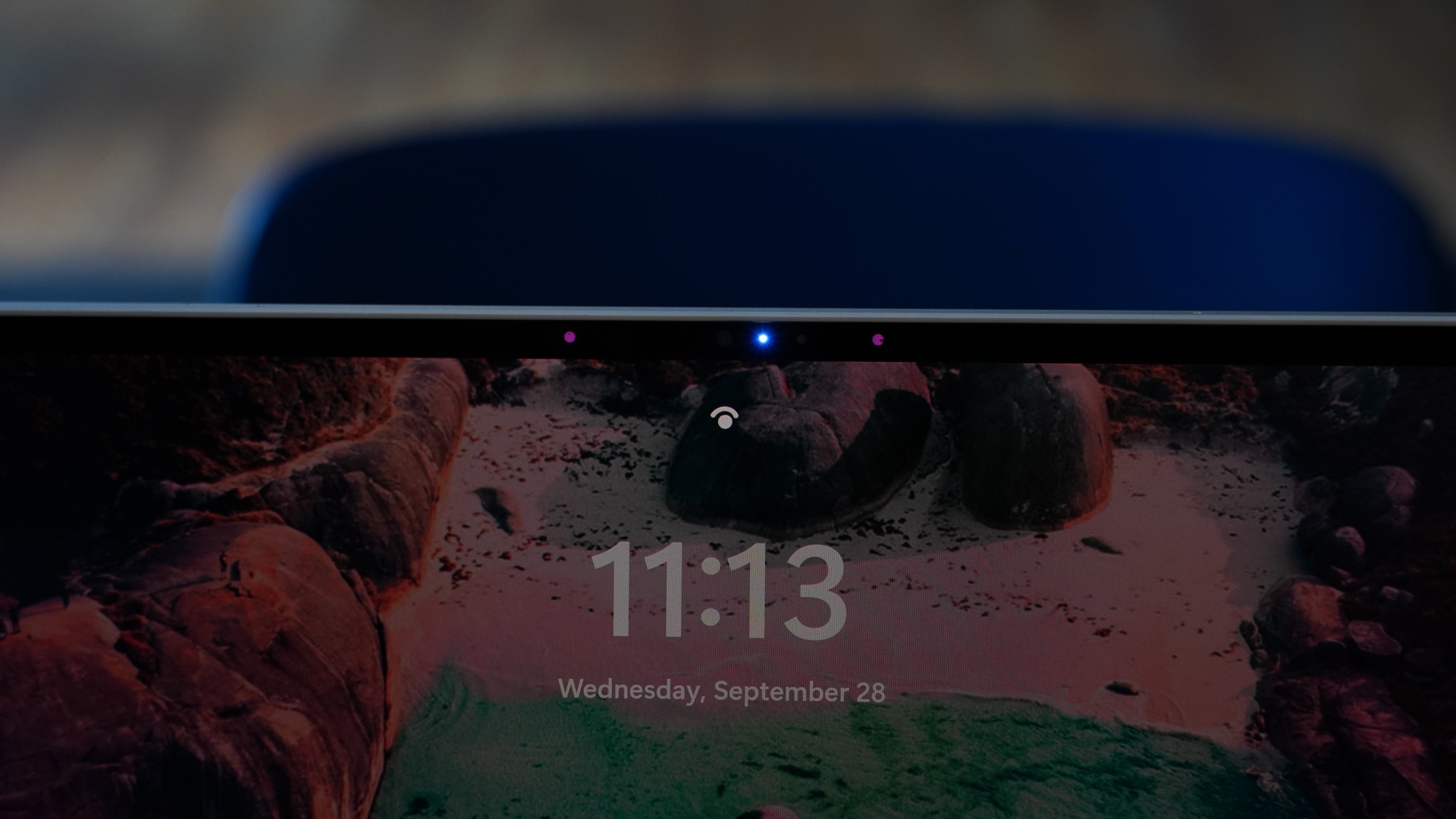
The Dell XPS 13 Plus runs warm and can verge on hot if it’s charging. It can see temps as high as 104 degrees Fahrenheit on the underside during operation, though that drops to a more comfortable 88 degrees on the keyboard. Dell has a suite of tuning tools in the My Dell app that allows for customisation to boost cooling (at the expense of noise) or boost performance (at the expense of battery life). But at its default, the XPS 13 Plus may not be making the most of its internals.
Dell also has to contend with Apple, as the XPS line seems almost uniquely positioned to rival the MacBook family. Up against the M1 Max-powered MacBook Pro 14, it’s not a pretty fight. The two are neck-in-neck in single-core performance (Apple leading with 1,777 in Geekbench 5 and 1,530 in Cinebench R23, where the XPS 13 Plus hit 1498), but Apple pulls far ahead in multi-core benchmarks (hitting 12,663 in Geekbench 5 and 12,206 in Cinebench R23, where the XPS 13 Plus only hit 8,129) and gains tons of extra ground when its GPU can come into play, almost tripling the XPS 13 Plus’s score of 21,109.
Not your all-day device
Battery life isn’t a huge disappointment, but the Dell XPS 13 Plus isn’t quite keeping up with some of the longhaulers that have recently come to market. Part of the problem is the 4K OLED display, which even Dell notes brings the laptop’s battery life down to 7 hours from the 13 hours offered on the FullHD+ model. My testing saw the laptop get 7 hours in daily use, and it lasted streaming non-stop video at 200 nits for 6 hours and 38 minutes before it tapped out. With some power-saving measures, it could manage to last the full workday, but it doesn’t hold up next to devices like the Asus Zenbook S13 OLED at 11 hours and 21 minutes or M1 MacBook Pro at 18 hours.
Should I buy the Dell XPS 13 Plus?
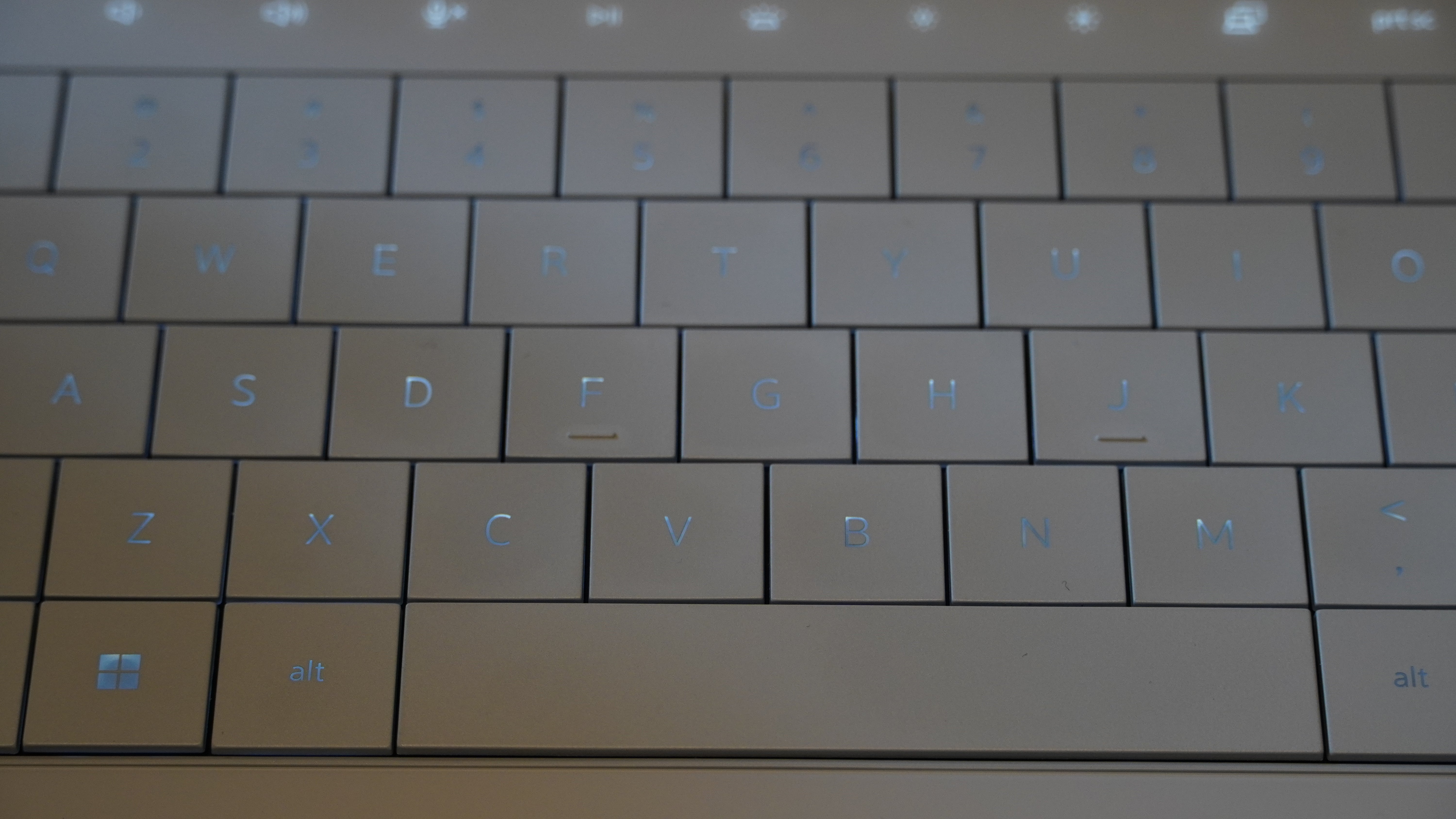
The Dell XPS 13 Plus has gotten itself in a weird spot. Though its design may speak to those who value aesthetics over or on par with functionality, it doesn’t stick the landing perfectly with its design choices.
Then there’s the matter of how much it actually delivers for the price. It isn’t a weak machine by any measure, but Dell has it out-muscled by its own Inspiron 14 Plus, which packs an Intel Core i7-12700H with 16GB of DDR5 memory. It may be a bit heavier and have a more basic display, but those focused on performance may worry less about those aspects. For those whose concern is the visuals, there’s no shortage of Asus Zenbook models with exceptional OLED displays and capable internals at a fraction what Dell’s charging, not to mention the Acer Swift 5 that traded blows with the XPS 13 Plus on every front while costing less (and packing in more ports). And those who can live with macOS just as well as Windows have almost no reason to pick this laptop over its MacBook counterparts.
